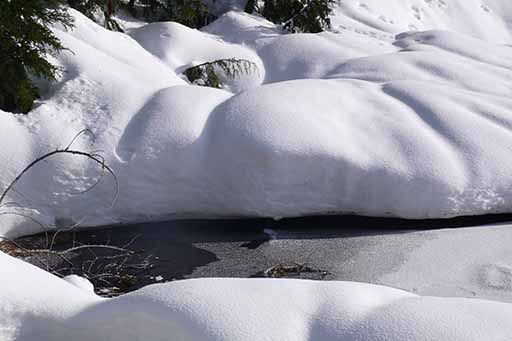Something to keep in mind…
not
have to melt,
…
it just needs to be lubricated enough from below;
…
the chunks that are holding the front in place need to melt;
…
and then the whole of it will slide into the ocean.
…
Pauline Seales
..
.

YOU DO THE MATH
~
(1) This US heartland has been flooded for five months. Does anyone care?
The Guardian 8-3-19
“Dating back to late February, about 550,000 acres of land have been underwater in the rural Yazoo backwater area of the lower Mississippi delta. About half of the acreage is farmland, creating devastating effects in a region where agriculture is the lifeblood of the economy. While flooding in the region is common, this year’s floodwater has hung around longer than ever. … Compounding the problem was a high Mississippi River, which remained near or above flood stage for the longest span since 1927. The perfect storm of historic rainfall and a high river resulted in a backwater flood that has lingered beyond anything the region has ever seen.”
(2) Greenland Is Melting Away Before Our Eyes
Rolling Stone 7-31-19
“A tweet from the Danish Meteorological Institute, the official weather service of Greenland, said “almost all the ice sheet, including Summit” measurably melted on Tuesday. According to a preliminary estimate, that melt covered 87 percent of the ice sheet’s surface, which would be the second-biggest melt day in Greenland’s recorded history. Separate weather monitoring equipment at Summit Camp at the top of the 10,000-foot-thick Greenland ice sheet confirmed the temperature briefly reached the melting point. …
Ice core records show melt days like these have happened only a handful of times in the past 1,000 years. But, with the advent of human-caused climate change, the chances of these full-scale melt events happening are sharply increasing. …
With a decade or two of hindsight, scientists now believe Greenland passed an important tipping point around 2003, and since then its melt rate has more than quadrupled. This week alone, Greenland will lose about 50 billion tons of ice, enough for a permanent rise in global sea levels by about 0.1mm. So far in July, the Greenland ice sheet has lost 160 billion tons of ice — enough to cover Florida in about six feet of water. …
“This melt event is a good alarm signal that we urgently need change our way of living,” said Fettweis. “It is more and more likely that the IPCC projections are too optimistic in the Arctic.” Altogether, the Greenland ice sheet contains enough ice to raise global sea levels by about 24 feet.”
(3) Climate Change in Siberia: Massive Wildlife Tragedy as Bears and Foxes Flee Taiga, While Smaller Animals Suffocate in Smoke
Global Research 8-1-19
“Wild animals are turning to humans as they escape gas-chamber-like woods, with wildfires continuing to rage across almost 3 million hectares. Even the Arctic is on fire, with smoke blanketing an area larger than the European Union, and a state of emergency declared in several large areas of Siberia. And a dire warning has been sounded about a major change in climate in Siberia. …
Mothers with young cubs – at this time of year this would include lynxes, foxes and hares – would be affected the most as there is little they can do to move their little ones. Slow moving hedgehogs are ‘doomed’, said Naidenko, as well as most of smaller animals like mice whose strategy to avoid fire is to hide in holes.”
(4) India’s ghost villages: Food and water scarcity forcing many to leave
DW 8-6-19
“In villages across Maharashtra the story is the same. Drought and crop failure hit 72 percent of districts in the state this year. According to the India Meteorological Department (IMD), Beed district, in which Hatkarwadi village is situated, has seen a pattern of declining rainfall over the last decade.
Currently most of the migration away from the region is seasonal, with migrants finding work elsewhere for six to nine months of the year and returning in the monsoon for planting season.
In the most severely drought-hit areas though, villages are gradually emptying even in the monsoon. In Hatkarwadi, around 80% of the villagers have found permanent work elsewhere, only returning for brief holidays to visit family members left behind.”
You do the math…

HOT AIR NEWS ROUNDUP
‘July Has Re-Written Climate History’: Month Could Go Down as Planet’s Hottest Ever
Common Dreams 8-2-19
Using data from Europe’s Copernicus Climate Change Program from the first 29 days of the month, the WMO said that July at least equaled—and may have broken—the dubious record set in July 2016. 2016, however, was marked by the occurrence of an El Niño phenomenon, which can contribute to warmer temperatures. 2019 is not. July’s warmth followed the planet’s warmest June ever recorded, according to global scientists. What’s more, said the WMO, 2015 to 2019 are on track to be the warmest five years on the books.
Dying Orchards, Missing Fish as Climate Change Fueled Europe’s Record Heat
Inside Climate News 8-2-19
The harvest in Mirjana Štimac’s almond orchard usually starts in late July, but this year, the crop has failed, with only a few mature nuts per tree. The trees are dying, and she blames a series of heat waves that have struck in recent years in an orchard that was already under stress from steadily rising global temperatures. Europe saw off-the-charts heat this summer: June was 2 degrees Celsius (3.6°F) above average and crushed the record for the month by a full 1°C (1.8°F), and a late July temperature spike set new record highs across the continent.
‘We Cannot Keep Handing Over Billions to Military-Industrial Complex,’ Says Sanders as Senate Passes Massive Pentagon Budget
Common Dreams 8-2-19
“At $738 billion for fiscal year 2020 and $740 billion for fiscal year 2021,” Hartung wrote, “the agreement pushes spending on the Pentagon and work on nuclear warheads at the Department of Energy to historic levels: higher than the peaks of the Korean and Vietnam wars and the Reagan buildup of the 1980s, and nearly twice the Cold War average.”
How Airplane Contrails Are Helping Make the Planet Warmer
Yale Environment 360 7-18-19
[Researchers] forecast a near-tripling in the “radiative forcing” from contrails by 2050. … If the air is not cool or moist enough, contrails may not form or may disappear quickly. But at other times, they stick around – either as tight, white lines in the sky, like chalk marks, or gradually spreading to create thin layers of ice clouds. They are similar to natural cirrus clouds and are often called contrail cirrus clouds. … Like regular cirrus clouds, contrail cirrus clouds have two competing effects on climate. They shade us by reflecting incoming sunlight back into space. But they also trap heat radiating from the earth’s surface, so causing warming in the air below. During the day, cooling compensates part of the warming. But at night, with no sunlight, only the warming effect operates. Red-eye flights are a red light for climate.
Finally, this is being talked about on the news…
Economics is a failing discipline doing great harm – so let’s rethink it
The Guardian 8-3-19
It’s because neoclassical economics has so deeply entrenched the notion that markets are better than all other ways of organising life, that decisions escape rational scrutiny. Academic economists will tell you that their discipline offers a far more complex picture of the world. But, at the policy level, what tilts a spending decision one way or the other is the simple power of the seeming “folk wisdom” that markets are best. It becomes the rule of thumb. … Roasted by heatwaves, this year the world went into ecological overshoot on 29 July, the earliest yet. Unless we begin again with economics, understanding and letting go what has gone wrong, and letting more of the real world in, one day soon everything will have fallen apart and nobody will quite know why. But the answer will be: it was the economy, stupid.
Drastic Changes to Food Production and Consumption Needed to Save Planet From Catastrophic Warming, IPCC Reveals
Common Dreams 8-3-19
When some of the world’s top scientists conclude an international summit in Geneva next week, they are expected to call for a major shift to vegetarian diets around the world in order to keep the warming of the globe under 1.5 degrees Celsius above pre-industrial levels. Simply focusing on reducing or eliminating carbon emissions from fossil fuel industries, factories, and vehicles will not be enough to avoid catastrophic climate change, according to a leaked draft of the report out of the Intergovernmental Panel on Climate Change (IPCC) summit.
Climate Weekly: Flying into a carbon budget ceiling
Climate Home News 8-2-19
emissions? The aviation sector has largely sidestepped carbon constraints to date. Emissions from air travel across borders are regulated by the International Civil Aviation Organization – never mind the fact its climate strategy is not aligned with the goals of the Paris Agreement. It is potentially significant, then, that France’s environment authority is not satisfied with this line. Ruling on a plan for facilities at Marseille Airport to accommodate millions more passengers, the authority ordered developers to show how it was compatible with the country’s 2050 carbon neutrality goal. This demand does not automatically rule out airport development, but it does make it harder to justify.
Humans Must Urgently Change Food Production And Land Use To Avoid Climate Disaster, Says UN Draft Report
IFL Science 8-5-19
Humans now exploit 72 percent of the planet’s ice-free surface for resources. In turn, land has been transformed from an asset against climate change into a major contributor of carbon. Uncultivated land, namely forests, can act as natural reservoirs to store carbon-containing chemical compounds. However, with increased deforestation, changes in land use, and soil erosion, these carbon sinks have weakened, causing carbon emissions to rise. Another major subject in the report is food production, especially intensive agriculture and meat production. Around half of emissions of methane, a major greenhouse gas, come from cattle and rice fields. A doubling of meat consumption since the 1960s has, therefore, created a 70 percent increase in methane emissions from domesticated animals.
The $20 million climate change party: How Camp Google racked up an 800-tonne carbon footprint flying ‘hypocritical’ celebrities to environmental talking shop on 114 private jets to watch Coldplay and hang out on mega-yachts
Daily Mail 8-1-19
Google picked up the tab for their flights, accommodation and entertainment during the three-day ‘Google Camp’, sending the costs spiralling. With environmental costs thrown in – guests arriving in Palermo on 114 fuel-guzzling planes, roaring around Italy in Maseratis and enjoying the well-watered golf courses and swimming pools at their $903-a-night resort – the climate party quickly made a mockery of its grandiose intentions. Britain’s Prince Harry is understood to have given a passionate barefoot speech about saving the planet, although Buckingham Palace has refused to confirm his attendance. ‘This is not something we are commenting on,’ a spokeswoman told MailOnline. Sources said Google laid on a private jet to take him to Sicily and a helicopter to ferry him from the airport at Palermo to the luxury resort of Verdura on the island’s south coast. Google did not respond to requests for comment.
San Francisco airport bans all plastic water bottles
inhabit 8-6-19
The San Francisco airport (SFO) has become the first airport to announce a full ban of plastic water bottles throughout its stores and restaurants. The ban will go into affect swiftly, starting August 20, as part of the airport’s overall pledge to reach zero-waste by 2021. Staff and passengers will need to bring or purchase refillable water bottles or compostable cups that can be used at the airport’s 100 different refilling stations.
LEGISLATION, ELECTIONS & POLICY
Climate Could Be an Electoral Time Bomb, Republican Strategists Fear
NYT 8-2-19
The polling bears out Mr. Heye’s prediction of a backlash. Nearly 60 percent of Republicans between the ages of 23 and 38 say that climate change is having an effect on the United States, and 36 percent believe humans are the cause. That’s about double the numbers of Republicans over age 52. But younger generations are also now outvoting their elders.
‘Fight for our lives’: Fiji calls world leaders ‘selfish’ as it lays out climate crisis blueprint
The Guardian 8-7-19
Fiji will introduce one of the world’s most ambitious legislative programs to tackle the climate crisis, and has labelled the global community’s decision to set aside the call for global heating to be capped at 1.5C “grossly irresponsible and selfish”. … “In Bonn in May, we suffered a significant setback when the nations of the world – under pressure from certain fossil fuel producers – set aside the IPCC scientific report endorsing the call for global warming to be capped at 1.5 degree Celsius above that of the pre-industrial age,” he said. Sayed-Khaiyum said the decision was “a blow to our hopes” and “grossly irresponsible and selfish”.
Top Scientist Says He Quit USDA Because Trump Admin Tried to Bury His Study on Climate and Nutrition
Common Dreams 8-5-19
Ziska—who worked at USDA under five presidents, both Republicans and Democrats—charged in an interview with Politico that he left the department’s Agricultural Research Service (ARS) because the USDA tried to block the public dissemination of his research on how the human-caused climate crisis’s impact on rice could threaten the nutrition of 600 million people. The study, Politico reported, was internally cleared at the department and peer reviewed prior to its publication in the journal Science Advances last year.
Bolsonaro under fire for deforestation denial, after sacking space agency chief
Climate Home News 8-5-19
The latest data released by INPE shows that deforestation has increased 40% in the last two months compared to the same period a year ago. Bolsonaro accused the agency of overstating the scale of destruction, saying: “We cannot accept sensationalism, or the disclosure of inaccurate numbers that cause great damage to Brazil‘s image.” However experts defended the agency. Paulo Barreto, a senior researcher at NGO Imazon, told Climate Home News said if anything the monthly reports erred on the conservative side. INPE’s annual reports, which are based on higher resolution satellite images, have a 95% accuracy rate, he said.
Government ‘didn’t care’ about reducing emissions: Inside Quebec’s green fund
National Post 7-28-19
When Ljiljana Latkovic was named to the council governing Quebec’s multibillion-dollar green fund in 2017, she thought she was going to use her science background to help choose projects aimed at fighting climate change. Instead, Latkovic said she and the eight other council members were asked to sign off on proposals whose financing had already been approved by various government departments. Moreover, she said, in the case of many projects they were approving, councillors had no idea how the projects were actually going to reduce emissions of the greenhouse gases, such as carbon dioxide, that trap heat in the atmosphere, causing global temperatures to rise.
THE ARCTIC
An atmospheric river is drenching parts of Alaska after a stretch of scorching weather
Ankorage Daily News 8-6-19
More than 4 inches of rain fell in a single day late last week in some areas of the Seward Peninsula in Western Alaska, equivalent to more than a month’s worth of precipitation, causing flooding and establishing new rainfall records. Nome registered 2.47 inches of rain Friday, beating its previous 24-hour rainfall total of 2.38 inches set in 1956. It also marked Nome’s first day with more than 2 inches of rain since 1957. In Elim, 100 miles east of Nome, 3.28 inches came down. That also appears to have set an record for 24-hour rainfall. Elim hit 58 degrees Friday at the same time, setting a record high temperature for the date. Northeast of Elim, Hogatza River saw a whopping 4.82 inches. It’s all in character for atmospheric rivers, which can slingshot uncharacteristic warmth and humidity all the way up to the Arctic Circle.
Greenland Ice Sheet Beats All-Time 1-Day Melt Record
Earth & Space Science News 8-3-19
Any ice that we’re losing from the ice sheet is being put into the ocean and adding to sea level,” research scientist Twila Moon of NSIDC told Eos. Greenland is a major contributor to global sea level rise and is projected to contribute 5–33 centimeters of sea level rise globally by 2100, according to a June 2019 study in Science Advances. The University of Colorado estimated that this week’s melt will contribute 0.11 millimeter of sea level rise to global oceans.
More ice melted from the ice sheet on August 1, 2019 than any other day on record, shedding 12.5 billion tons of water into the sea…
Climate System “Getting Unhinged” as Massive Heat Wave Causes Record Melting of Greenland Ice Sheet
Democracy Now 8-2-10
The massive heat dome that shattered all-time temperature records across much of Europe last week has settled in over Greenland, driving temperatures across the vast region to as much as 30 degrees Fahrenheit above normal. In July, Greenland’s ice sheet lost 197 billion tons of ice, the equivalent of around 80 million Olympic swimming pools. This comes as the World Meteorological Organization said Thursday that July was the warmest month in recorded human history. It followed the hottest June on record, as atmospheric carbon dioxide levels climbed to a record high of 415 parts per million earlier this year. We speak with Jason Box, professor and ice climatologist at the Geological Survey of Denmark and Greenland.
Why the Arctic Fires Are So Bad for the Planet (Aside from the Actual Flames)
Vice 8-4-19
“There’s a heatwave in the Arctic region, and certainly that makes fires burn longer and larger,” said Zicheng Yu, a paleoecologist at Lehigh University who studies Arctic peat. “That carbon from the fires is released, then you get greater warming.” In July alone, the fires released an estimated 79 million metric tons of CO2, according to the European Centre for Medium-Range Weather Forecasts data released on Thursday. The average American, for reference, leaves a footprint of 15 tons of carbon emissions per year. That means about a year’s worth of 5 million Americans’ emissions came from the fires in the Arctic in a single month — and twice the carbon emissions of the last big Arctic fire season in 2004 and 2005.
FOSSIL FUELS
Texas county sues Exxon over air pollution from petrochemical fire: official
Reuters 8-3-19
The suit by Harris County, which includes Baytown, is the second lawsuit this year against the company involving fires at the plant. The suit seeks court orders to prevent future fires at the Baytown plant, said Rock Owens, managing attorney for the environmental practice in the Harris County Attorney’s Office. “It’s disappointing to me for a company to have these kinds of problems with the potential for some kind of disaster,” he said. He said Harris County also is also asking the state court to order an investigation to determine the root cause of the fire in a propylene recovery unit. The county is seeking similar orders in connection with a lawsuit filed in March over a hydrotreater fire in the Baytown refinery.
Oil Has a Millennial Problem as Talent Pipeline Trickles
Bloomberg 8-1-19
Oil companies have a problem, and his name is Robert Paver. This 22-year-old graduate, along with his fellow students of earth sciences at the University of Oxford, should be natural recruits for an industry that has a long and lucrative history in the U.K. But instead of contemplating a career at an offshore driller, he’s planning to become a management consultant. Out of Paver’s cohort of 28 students, only one is going into the oil and gas industry.
Fracking’s Dirty Water Problem Is Getting Much Bigger
Desmog 8-2-19
While fracking for oil and gas in the U.S. has contributed to record levels of fossil fuel production, a critical part of that story also involves water. An ongoing battle for this precious resource has emerged in dry areas of the U.S. where much of the oil and gas production is occurring. In addition, once the oil and gas industry is finished with the water involved in pumping out fossil fuels, disposing of or treating that toxic wastewater, known as produced water, becomes yet another problem. … This week, Bloomberg reports that the Permian region of Texas and New Mexico, a fracking hotspot, will need an estimated $9 billion of new investment to create 1,000 new injection disposal wells to deal with fracking wastewater over the next decade, citing a note to clients from financial services company Raymond James and Associates.
A small number of leaky natural gas wells produce large emissions of greenhouse gases
PHYS ORG 8-2-19
Mark Zondlo, an associate professor of civil and environmental engineering, spent two years sampling emissions from the Marcellus Shale, a basin that stretches from West Virginia into New York State. In research published in the journal Environmental Science and Technology, the authors reported that 10 percent of wells account for more than three quarters of gas leaked into the atmosphere as a byproduct of extraction. That has the equivalent greenhouse gas effect of adding 500,000 cars, or about 2 percent of the U.S. auto market, to the road. This finding, however, may have a silver lining for mitigating impacts on the environment, Zondlo said, because fixing a relatively small number of these “superemitting” wells could lead to a major reduction in emissions.
Oil Needs To Be Below $20 To Compete With Electric Cars
Oil Price 8-5-19
The long-term breakeven oil price needs to be as low as $9 or $10 a barrel so that gasoline cars can remain competitive as a means of transportation in the future, BNP Paribas Asset Management said in new research this month. The research report—authored by Mark Lewis, Global Head of Sustainability Research at BNP Paribas Asset Management—introduces the concept of Energy Return on Capital Invested (EROCI) to measure how much a given capital outlay on oil and renewables translates into useful or propulsive energy at the wheels: “in other words, for a given capital outlay, how much mobility can you buy?” According to BNP Paribas Asset Management’s analysis, at present, for the same capital investment, wind and solar energy will already produce significantly more useful energy for EVs than oil at $60 a barrel will for cars and other light-duty vehicles (LDVs).
Oil built Saudi Arabia – will a lack of water destroy it?
The Guardian 8-6-19
While many question the accuracy of the kingdom’s optimistic estimates of its own oil reserves, the looming threat of a lack of water could prove to be an even bigger problem. Saudi Arabia consumes double the world average of water per person, 263 litres per capita each day and rising, amid a changing climate that will strain water reserves. In March, the Kingdom launched the Qatrah programme to demand citizens drastically cut their water use. Its aim is to ration water to 200 litres per person per day by 2020 and 150 litres by 2030. … “This means that Saudi Arabia is using more than four times the water that renews on average – and that’s in Vision 2020,” says Dr Rebecca Keller from Stratfor – a private intelligence and geopolitical analysis firm – who says she was shocked after learning about the country’s water use. “Technically they’re using fossil water, which renews at a really, really slow rate. The sheer volume of overuse stood out to me.”
WEATHER
Good graphs…
June 2019 Global Temperature Update
Climate Science, Awareness and Solutions by Dr. James Hansen 7-15-19
June 2019 was, easily, the warmest June in the period of instrumental temperature measurements, as shown in the figure above. June 2019 was +0.93°C, exceeding the prior record of +0.82°C in June 2016, both measured relative to the 1951-1980 base period. The contiguous U.S. and north-central Eurasia were cool, but parts of Europe had record heat waves and Alaska had many wildfires. … The Northern Hemisphere is mostly land, and temperature over land in the cool seasons fluctuates a lot depending on the weather, i.e., whether the wind has a more northerly or southerly component. Thus large-scale Rossby waves, waggles in the jet stream, cause big fluctuations in land temperature during NH winter, when there is a huge equator-to-pole temperature gradient.
‘Biggest Crisis No One Is Talking About’: Quarter of Humanity Faces ‘Extremely High Water Stress’ Intensified by Climate Emergency
Common Dreams 8-6-19
An analysis released Tuesday warns that 17 countries which are collectively home to a quarter of the global population face “extremely high water stress” that is on track to get worse—particularly because of the human-caused climate emergency. The data is part of the World Resources Institute’s (WRI) Aqueduct Water Risk Atlas, a publicly available database and interactive tool designed to enhance global understanding of water scarcity, which WRI calls “one of the defining issues of the 21st century.”
#DayZeroWatch – New @WRIAqueduct data shows which countries are facing #waterstress, and reveals several emerging trends and hotspots. Learn more: https://t.co/XJkY3VcP7I pic.twitter.com/5gVnQAtNi6
— World Resources Inst (@WorldResources)
Climate change could revive medieval megadroughts in US Southwest
Science Daily 7-24-19
A new study provides the first comprehensive theory for why there were clusters of megadroughts in the American Southwest during Medieval times. The authors found that ocean temperature conditions plus high radiative forcing — when Earth absorbs more sunlight than it radiates back into space — play important roles in triggering megadroughts. The study suggests an increasing risk of future megadroughts in the American Southwest due to climate change.
July heatwave up to 3C hotter due to climate change
PHYS ORG 8-2-19
Scientists from the World Weather Attribution (WWA) team combined climate modelling with historical heatwave trends and compared it with monitoring data across the continent. They concluded that the temperatures produced by the climate models were as much as 3C (5.5 degrees Farenheit) lower than those actually observed during the heatwave in Europe. “In all locations an event like the observed would have been 1.5 to 3C cooler in an unchanged climate,” the WWA said, adding that the difference was “consistent with increased instances of morbidity and mortality.”
European Scientists: July 2019 Hottest Month on Record
Category Six 8-5-19
The Copernicus group found that global temperature in July was about 0.04°C (0.07°F) warmer than July 2016. July is typically the warmest month of the year globally, running about 3-4 degrees Celsius warmer than January. This is because most of the planet’s land area – which warms faster than oceans – is located in the Northern Hemisphere, so the northern summer coincides with the warmest global average. The Copernicus analyses extend back to 1979. Because of long-term global warming, this July’s record is effectively a record for at least the past century of global observation.
A 2014 climate change documentary imagined a weather report in 2050. Those temperatures are already being exceeded
Independent 8-1-19
The unprecedented heat in France last week was mirrored across much of northern Europe, where one by one temperature records tumbled. Holland beat its national record that had stood since 1944 with a reading of 39.3C in Eindhoven, while a temperature of 40.7C in Beitem broke Belgium’s record. Although no single weather event can be directly attributed to climate change, climate scientists warn global carbon emissions make extreme heatwaves far more likely. A study last month by the Potsdam Institute for Climate Impact Research revealed the five hottest summers in Europe since 1500 have come since 2002.

ADAPTION AND RESILIENCE
In the future, this electricity-free tech could help cool buildings in metropolitan areas
EurekAlert 8-5-19
Engineers have designed a new system that can help cool buildings in crowded metropolitan areas without consuming electricity, an important innovation at a time when cities are working to adapt to climate change. The system consists of a special material — an inexpensive polymer/aluminum film — that’s installed inside a box at the bottom of a specially designed solar “shelter.” The film helps to keep its surroundings cool by absorbing heat from the air inside the box and transmitting that energy through the Earth’s atmosphere into outer space. The shelter serves a dual purpose, helping to block incoming sunlight, while also beaming thermal radiation emitted from the film into the sky. “The polymer stays cool as it dissipates heat through thermal radiation, and can then cool down the environment,”
From greenhouse gas to fuel: Novel catalysis approach reduces carbon dioxide to methane
Science Daily 8-1-19
A growing number of scientists are looking for fast, cost-effective ways to convert carbon dioxide gas into valuable chemicals and fuels. Now, an international team of researchers has revealed a new approach that utilizes a series of catalytic reactions to electrochemically reduce carbon dioxide to methane, the main ingredient in natural gas, eliminating an intermediate step usually needed in the reduction process. “We want to supply renewable electricity and take carbon dioxide from the atmosphere and convert it to something else in one step,”
The Cheapest Way to Save the Planet Grows Like a Weed
Truthout 7-30-19
Fortunately, as of December 2018 there is now a cheaper, faster and more efficient alternative — one that was suppressed for nearly a century but was legalized on a national scale when President Trump signed the Agriculture Improvement Act of 2018. This is the widespread cultivation of industrial hemp, the non-intoxicating form of cannabis grown for fiber, cloth, oil, food and other purposes. Hemp grows to 13 feet in 100 days, making it one of the fastest CO2-to-biomass conversion tools available. Industrial hemp has been proven to absorb more CO2 per hectare than any forest or commercial crop, making it the ideal carbon sink. It can be grown on a wide scale on nutrient poor soils with very small amounts of water and no fertilizers. Hemp products can promote biodiversity and reverse environmental pollution by replacing petrochemical-based plastics, which are now being dumped into the ocean at the rate of one garbage truck per minute.
Could Renewable Natural Gas Be the Next Big Thing in Green Energy?
Yale Environment 360 7-25-19
In the next few weeks, construction crews will begin building an anaerobic digester on the Goodrich Family Farm in western Vermont that will transform cow manure and locally sourced food waste into renewable natural gas (RNG), to be sent via pipeline to nearby Middlebury College and other customers willing to pay a premium for low-carbon energy. For the developer, Vanguard Renewables, the project represents both a departure and a strategic bet. The firm already owns and operates five farm-based biogas systems in Massachusetts; each generates electricity on site that is sent to the grid and sold under the state’s net-metering law.
Common element combos could replace rare-Earth metals in electronics
New Atlas 8-5-19
“We’re in danger of running out of some of those elements because they’re not easy to recycle and they’re in limited supply,” says Roy Clarke, an author of the study. “It’s not viable for technology to rely on something that’s likely to run out on a scale of 10 to 20 years.” The researchers used molecular beam epitaxy (MBE) to produce the compounds in thin-film form, by layering the elements on top of each other with atomic precision. With this technique, the team was able to make a compound using elements from groups II, IV and V – zinc, tin and nitrogen. All of these are far cheaper and more common, but the resulting compound still has similar optoelectronic properties to its rarer counterparts.
A Deluge of Batteries Is About to Rewire the Power Grid
Bloomberg 8-2-19
The photogenic demonstration on Australia’s eastern coast presents a vision of what some see as the most significant shift in the energy sector since the late 19th century: rechargeable batteries—in electric vehicles, homes, industrial plants, and power grids—that will make the transition to renewable energy possible. … “We think storage can be the leapfrog technology that’s really needed in a world that’s focused on dramatic climate change,” says Mary Powell, chief executive officer of Green Mountain Power Corp., a utility based in Colchester, Vt., that’s worked with Tesla to deploy more than 2,000 residential storage batteries. “It’s the killer app in a vision to move away from bulk delivery systems to a community-, home-, and business-based energy system.” … The next step in storage technology is to turn electric cars into money makers for their owners. The latest global experiments along these lines entail hooking the cars’ batteries directly to power grids. These vehicle-to-grid connections enable reversible charging, the two-way transfer of electricity from cars to houses or back to power grids. A vehicle’s battery can power home appliances, sure. But more significantly, whenever it’s parked and plugged in, the car can make money by storing energy or helping stabilize supply and demand on the grid.

WILDLIFE & THE ENVIRONMENT
Europe’s record heat melted Swiss glaciers
AAAS 8-5-19
According to initial findings from the Swiss Glacier Monitoring Network (GLAMOS), Swiss glaciers experienced unusually high melt rates during the last heat wave, which occurred in late July, and an earlier heat wave that struck the continent in late June. … But the data already suggests that the losses this year have been unusually rapid. During the winter, the region received an above-average amount of snowfall, Huss pointed out. So the glaciers actually started the summer with a high level of snow cover and were doing “extraordinarily well” compared to the last few seasons, which have logged particularly strong losses, he noted. Scientists were hopeful that they’d end the season on a better note than the last few years.
If you read nothing else, read this…
Aquacalypse now: the end of fish
The Narwhal 8-4-19
Our oceans have been the victims of a giant Ponzi scheme, waged with Bernie Madoff–like callousness by the world’s fisheries. Beginning in the 1950s, as their operations became increasingly industrialized, with onboard refrigeration, acoustic fish-finders, and, later geographic positioning systems, or GPS, the fishing fleets first depleted populations of cod, hake, flounder, sole,and halibut in the Northern Hemisphere. As the abundance of those fish declined, the fleets moved southward, to the coasts of developing countries, and, ultimately, all the way to the shores of Antarctica, searching for icefishes and rock cods, and finally for the small, shrimp-like krill. … While the climate crisis regularly gathers front-page attention, people — even those who profess great environmental consciousness — continue to eat fish as if fishing were a sustainable practice. But eating a tuna roll at a sushi restaurant should be considered no more environmentally benign than driving a Hummer or harpooning a manatee. In the past 50 years, we have reduced the populations of large commercial fish, such as bluefin tuna, Atlantic cod and other favourites, by a staggering 90 per cent. One study, published in the prestigious journal Science, forecast that by 2048 all commercial fish populations will have “collapsed,” meaning that they will be generating 10 per cent or less of their peak catches. Whether or not the particular year, or even decade, of the peak catch is correct, one thing is clear: fish are in dire peril, and, if they are, then so are we.
EU agriculture not viable for the future
EurekAlert 8-2-19
“Taking sustainability and the SDGs seriously requires a deep reflection on agricultural policy, its budgets and instruments, and developing good indicators for measuring success,” says ecologist Guy Pe’er. “Beyond words, we found little of that.” According to the researchers, the CAP has the potential to support at least nine of the seventeen SDGs, but currently it only contributes to achieving two of them. The researchers also criticize that the EU wants to maintain some of the CAP instruments that have been proven to be inefficient, harmful to the environment and socially unfair. One key example for an inefficient instrument are the Direct Payments under the so-called Pillar 1 of the CAP. Around 40 billion euros (about 70 percent of the CAP budget) are paid to farmers on the basis of the cultivated area alone. This leads to unequal funding distribution: 1.8 percent of recipients get 32 percent of the money.
Salal’s Worrisome Die-Off
Hakai 8-1-19
British Columbia’s rugged and rain-drenched coast supports forests of western hemlock and red cedar, but it’s salal, a hardy evergreen shrub, that might be one of the region’s most important species. In the temperate coastal rainforest of the Pacific Northwest, the plant grows in thickets up to five meters high, forming dense walls that protect the coastal forest’s understory from the ocean’s punishing wind and salt spray. Deer, bears, and even wolves feast on salal’s sweet berries, as do Indigenous peoples, who, for thousands of years, have made the plant a central component of cooking and medicine. But in recent months, reports of dead and dying salal in British Columbia have accumulated. More troubling is that no one knows for sure what’s killing the plant. Some scientists theorize that a disease or fungus could be the culprit, while others point to this past winter’s unusually dry weather.
Elephant extinction will raise carbon dioxide levels in atmosphere As ecosystem engineers, forest elephants’ dining habits are climate-friendly
Science Daily 7-25-19
One of the last remaining megaherbivores, forest elephants shape their environment by serving as seed dispersers and forest bulldozers as they eat over a hundred species of fruit, trample bushes, knock over trees and create trails and clearings. Their ecological impact also affects tree populations and carbon levels in the forest, researchers report, with significant implications for climate and conservation policies.
Two percent of the world’s North Atlantic right whales have died in the last two months
Washington Post 7-31-19
Since the start of June, eight North Atlantic right whales — or 2 percent of the global population — have been found dead in Canadian waters, alarming scientists, conservationists and government officials who had believed they had begun to make progress in protecting the imperiled species. … Traditionally, the whales have spent the winter off Florida and Georgia, moved north to Cape Cod Bay in the spring and on to the Gulf of Maine and the Bay of Fundy for the summer. But in recent years, they’ve been appearing farther north, in the Gulf of St. Lawrence. Scientists blame climate change. As the whales’ usual feeding habitats have warmed, they theorize, the copepods that they like to eat have moved north. The whales followed. “The whales are showing up in areas that we had not seen them previously,” said Jonathan Wilkinson, Canada’s fisheries minister. “It’s more difficult [to address the issue] when the whales are moving.”
Nearly 200 reindeer found dead due to starvation caused by climate change, scientists claim
AOL 8-1-19
Ashild Onvik Pedersen, one of the researchers, told the newspaper that the unusual number of deaths was due to the climate crisis, which has reportedly impacted the Arctic — where Svalbard is located — twice as much as anywhere else. Since 1971, temperatures at Svalbard specifically have risen by a whopping 39 degrees Fahrenheit, which is five times faster than the global average, the Guardian revealed earlier this month. “Climate change is making it rain much more,” Pedersen said. “The rain falls on the snow and forms a layer of ice on the tundra, making grazing conditions very poor for animals.”

PROTESTS • EXTINCTION REBELLION • RESISTANCE
Students shut down major Montpelier intersection in climate protest
Vtdigger 8-2-19
The students came from across the country to learn about activism at Uprise Youth Action Camp, a Northeast Kingdom summer program focused on climate justice. The week-long camp culminated with the protest, where campers called for an education that would prepare them for “climate chaos.” They argued that there were two big things missing from schools’ curriculums — alternative economics and climate resilience — things they say students will need more and more as the climate continues to change.
Fridays for Future
Fridays for Future Tokyo
Metropolis 8-2-19
Hiroto Inoue, one of the founding members of Fridays for Future Tokyo and a second year student at Meiji University, explains that in Japan people often have negative stereotypes of protestors. “I invited my friends to join our actions, but without success. When people hear the word ‘demonstration,’ they think of something dangerous and scary.” Inoue notes that recent participants felt more comfortable about joining the demonstrations after seeing videos of marches in which everyone was smiling and having fun.
Greta Thunberg
Meet Greta Thunberg: 16-year-old activist sailing on a zero-emissions yacht to the UN climate summit
WQAD 7-29-19
Thunberg doesn’t fly due to high levels of emissions from air travel, according to a statement, and the Malizia II will allow her to make a zero-emissions journey thanks to solar panels and underwater turbines that generate electricity. “The science is clear and all we children are doing is communicating and acting on that united science,” said Thunberg in a statement. “Our demand is for the world to unite behind the science.” Thunberg looked into the most environmentally friendly way to get to New York before settling on the Malizia II.
Extinction Rebellion
JOIN XR USA: on their website
XR NEWSLETTERS & EVENTS: on their website
XR USA: on YOUTUBE
Extinction Rebellion pensioner: ‘I get arrested for the planet’
BBC 7-30-19
A retiree who spent a night in a police cell after a climate change protest blames her generation for the world’s climate emergency. Rosemary Blenkinsop, 68, is part of the Extinction Rebellion campaign group and takes part in protests across the country. The pensioner, from Wirksworth, Derbyshire, describes herself as an “arrestable” – which means, if it comes to it, she can be arrested.
Extinction Rebellion protests outside National’s Christchurch conference
XR New Zealand 7-30-19
Members of Extinction Rebellion staged a protest at the National Party’s annual conference in Christchurch on Sunday morning, with about 20 people demonstrating outside the Christchurch Town Hall’s main entrance. Spokeswoman Julie Downard said action on climate change should have cross-party support. “We’re protesting here at the National Party conference because we’re in a climate emergency and an ecological emergency, and this is something that needs to be well above politics” she said.

CLIMATE STUDIES
US infrastructure unprepared for increasing frequency of extreme storms
EurekAlert 8-1-19
“The take-home message is that infrastructure in most parts of the country is no longer performing at the level that it’s supposed to, because of the big changes that we’ve seen in extreme rainfall,” said Daniel Wright, a hydrologist at the University of Wisconsin-Madison and lead author of the new study.
Geoengineering versus a volcano
EurekAlert 8-5-19
However, the volcanic eruption created a greater temperature difference between the land and sea than did the geoengineering simulation. This resulted in different precipitation patterns between the two scenarios. In both situations, precipitation decreases over land–meaning less available water for many people living there–but the decrease was more significant in the aftermath of a volcanic eruption than it was in the geoengineering case. “When a volcano goes off, the land cools substantially quicker than the ocean. This disrupts rainfall patterns in ways that you wouldn’t expect to happen with a sustained deployment of a geoengineering system,” said lead author Duan.
Ocean temperature ‘surprises’ becoming more common – Researchers highlight need to account for climate change in marine planning
Science Daily 8-6-19
A new study published this week shows how marine ecosystems around the world are experiencing unusually high ocean temperatures more frequently than researchers previously expected. These warming events, including marine heatwaves, are disrupting marine ecosystems and the people who depend on them.
How wildfires trap carbon for centuries to millennia
EurekAlert 8-5-19
Now, a new study by researchers at Swansea University and Vrije Universiteit Amsterdam has quantified the important role that charcoal created by fires – known as pyrogenic carbon – plays in helping to compensate for carbon emissions. Lead author Dr Matthew Jones, who recently joined the UEA’s School of Environmental Sciences from Swansea Univsersity, said: “CO2 emitted during fires is normally sequestered again as vegetation regrows, and researchers generally consider wildfires to be carbon neutral events once full biomass recovery has occurred. “However, in a fire some of the vegetation is not consumed by burning, but instead transformed to charcoal. This carbon-rich material can be stored in soils and oceans over very long time periods.
Global Warnings
Paul Beckwith: “I declare a global climate change emergency to claw back up the rock face to attempt to regain system stability, or face an untenable calamity of biblical proportions.”
Kevin Hester: “There is no past analogue for the rapidity of what we are baring witness to. There has been a flood of articles … 2C is no longer attainable and that we are heading for dangerous climate change”
Magi Amma: We need to turn on a dime at mach nine! …
Equivalencies:
• 1 gigatonne equals one billion tons
• 1 gigatonne of carbon equals 3.67 gigatonnes of CO2
• 1 part per million of atmospheric CO2 is equivalent to 7.81 gigatonnes of CO2





